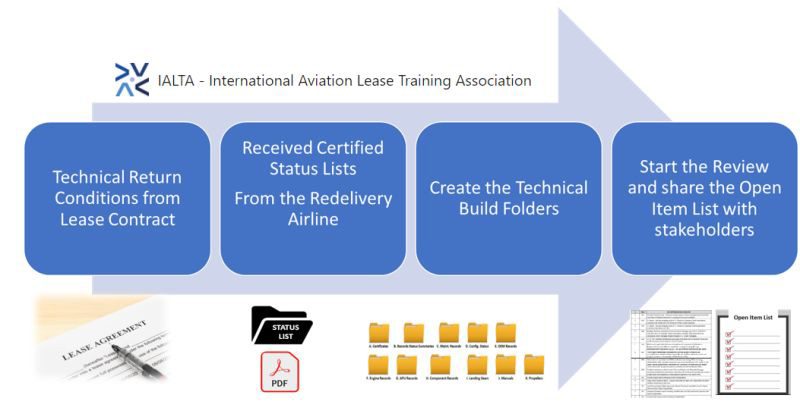To close out a number of recent posts on the topic of “where to start” the review, we thought it was best illustrated in our diagram below.
Last week we talked about the Certified STATUS lists and with your help we collaborated on a comprehensive list.
Another step that is early on in the process is extracting the Technical Return Conditions from the Lease Agreement, we have listed some typical examples below but remember these vary from lease to lease so please put time in to extracting them accurately;
* Clear from a maintenance check (MPD,AMP) 24 months/ 7500 Flight Hours (FH)/5000 Flight Cycles (FC).
* Airworthiness Directives(AD) and Service Bulletins(SB) cleared for 1000FH/1000FC/6months
* HT components clearance 6 months/1000FH/1000FC.
* Looking back 3 years for OCCM components replaced and have certificates for all of these.
* Engines and APU no less than 3500FC to next Shop Visit(SV).
* LDG with no less than 3500FC to next SV.
* All Life Limit Parts (LLPs) with no less than 3500FC to next SV.
* All Structure Repairs to be Permanent and recorded on the Dent and Buckle (D&B).
With your lease agreement and having received the Certified Status and Statements Lists from the redelivery airline CAMO or Quality Department then your next step is to set up a folder structure on your computer using the IALTA and industry standard format;
A. Certificates
B. Status Summaries
C. Maintenance Records
D. Configuration Status
E. OEM Records
F. Engine Records
G. APU Records
H. component Records
I. Landing Gears
J. Manuals
K. Propellers
Stay up-to-date with all our aviation news and information:
- Click Here to sign up to the IALTA newsletter.
- Follow us on LinkedIn:
- Learn more at www.ialta.aero/courses
#airline #maintenance #training #aviationindustry #aviationtraining #aircraftmaintenanceengineering #aircraftengines #aircraftleasing #aircraftsales #IALTA
